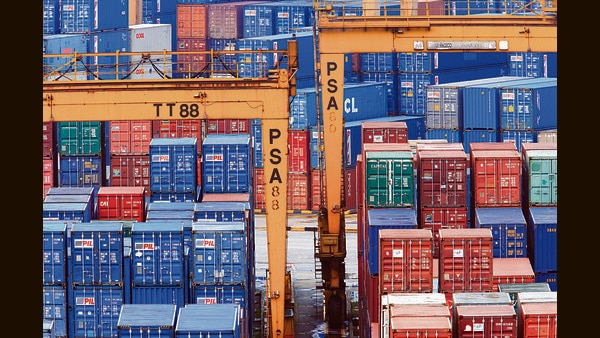
3 min read . 12:45 AM IST
After being passed by lawmakers of the 27-nation bloc, the Carbon Border Adjustment Mechanism (CBAM) Bill is expected to come into force this month, empowering the bloc to charge a Carbon Border Tax (CBT) on imports of steel, aluminium, fertilizer, electricity, cement and hydrogen from January 2026.
New Delhi: The world’s first carbon tax, approved by the European Parliament last month, could impact no more than 1.8% or $8 billion of India’s exports, according to an internal assessment by the commerce ministry.
New Delhi: The world’s first carbon tax, approved by the European Parliament last month, could impact no more than 1.8% or $8 billion of India’s exports, according to an internal assessment by the commerce ministry.
After being passed by lawmakers of the 27-nation bloc, the Carbon Border Adjustment Mechanism (CBAM) Bill is expected to come into force this month, empowering the bloc to charge a Carbon Border Tax (CBT) on imports of steel, aluminium, fertilizer, electricity, cement and hydrogen from January 2026.
Hi! You’re reading a premium article
After being passed by lawmakers of the 27-nation bloc, the Carbon Border Adjustment Mechanism (CBAM) Bill is expected to come into force this month, empowering the bloc to charge a Carbon Border Tax (CBT) on imports of steel, aluminium, fertilizer, electricity, cement and hydrogen from January 2026.
“Of the five products in CBAM, cement, fertilizer and electricity exports to the EU are nil. And if you look at steel and aluminium, the exports are not more than 1.8% of the total exports. It is a small portion but it is a concern. But while it is a challenge for the industry it is also an opportunity (for greening the Indian manufacturing process),” a government official said.
In 2021, steel exports at $4.1 billion, and aluminium $2.7 billion were India’s 5th and 7th largest exports to the EU.
The official said the move could be inflationary for Europe as input costs would rise in a continent where inflation already runs higher than in India.
However, experts said Indian exporters may have to incur additional costs after the tax comes into effect.
Click on the image to enlarge
Sangeeta Godbole, a former revenue officer who was part of the Indian team negotiating the India-EU free trade deal, cautioned that exporters and exporting countries will have to bear an “extremely complicated” verification bureaucracy, while compliance costs will be a substantial additional burden.
“A verification system in which EU (or EU-accredited) verifiers will verify the correctness of emissions data reported by the exporter will come into play. This is built on a similar exercise which the EU attempted in the civil aviation sector in 2012. Verifiers are instructed to carry out verification with an attitude of ‘professional scepticism’,” Godbole said.
Just the basic information required by the EU runs into 26 columns, including how emissions are attributable to heating, cooling and manufacturing among others processes, she added.
The official cited above said that every country including India is taking steps to encourage renewable energy and discourage carbon emissions but the difference is that the EU’s net zero target is for 2050, compared with India’s 2070.
“Everyone is moving according to their own domestic condition. What the EU’s carbon tax does is that it says that Europe will not take into account domestic situations in other economies. And that is a concern,” the official added.
As per a Reserve Bank report, India’s contribution to global emissions of green house gases has been limited, although it increased between two four-decade periods: 1950-1990 and 1991-2020.
Its share of consumption-based emissions is, however, significantly lower than production-based emissions vis-à-vis major developed countries.
“Implementation of various climate finance commitments from advanced economies has been far from satisfactory. The extent of green financing for climate change adaptation has been about 5-10 times lower than required, and the gap between the required and actual has only grown,” RBI observed.
As against $100 billion per year pledged by advanced economies, an amount of only $83.3 billion was provided in 2020, and that was an increase of just 4% from 2019, the report added. While the Paris Agreement has emphasized on maintaining a balance between adaptation and mitigation finance, financial support for mitigation has remained higher than for adaptation.






